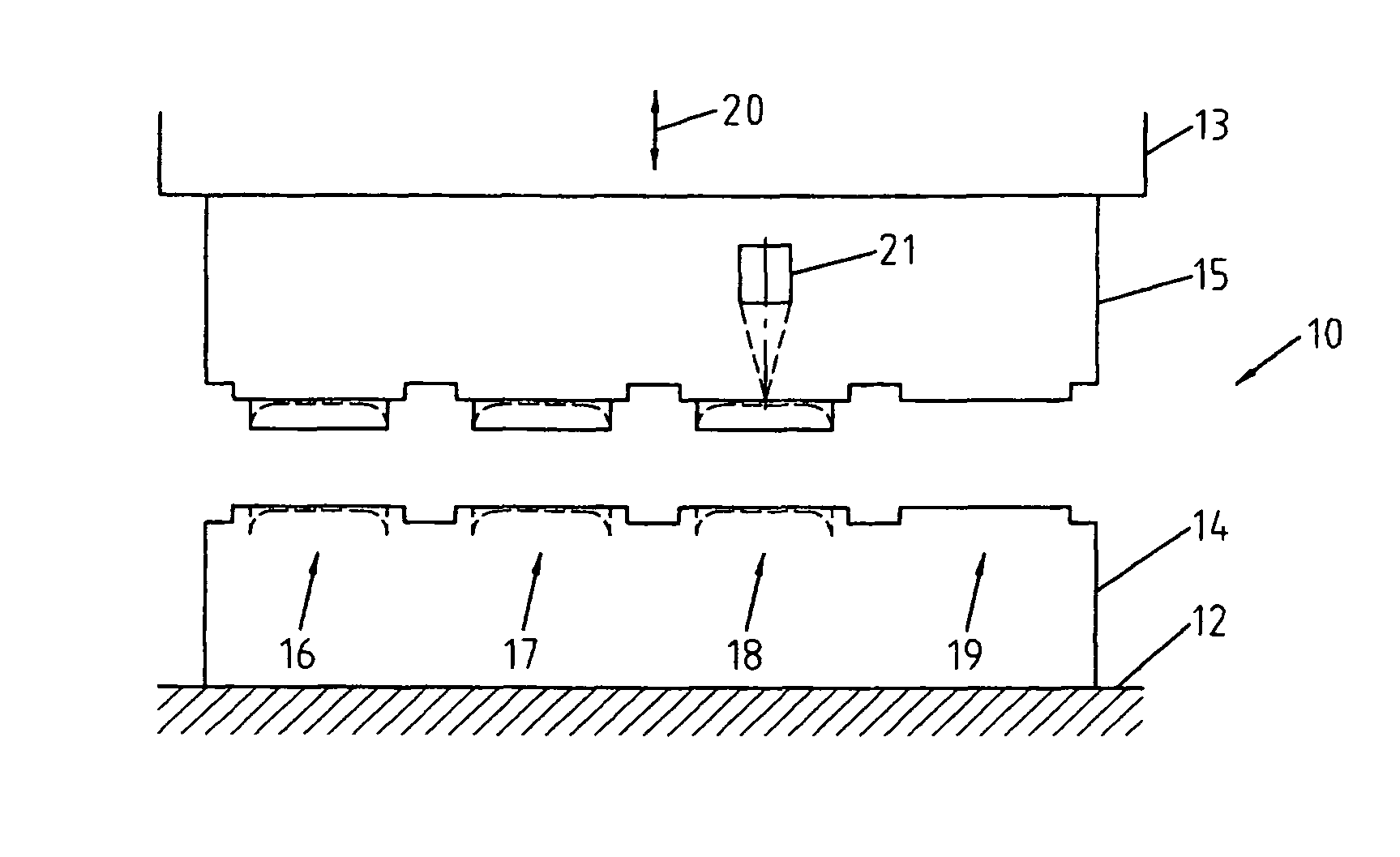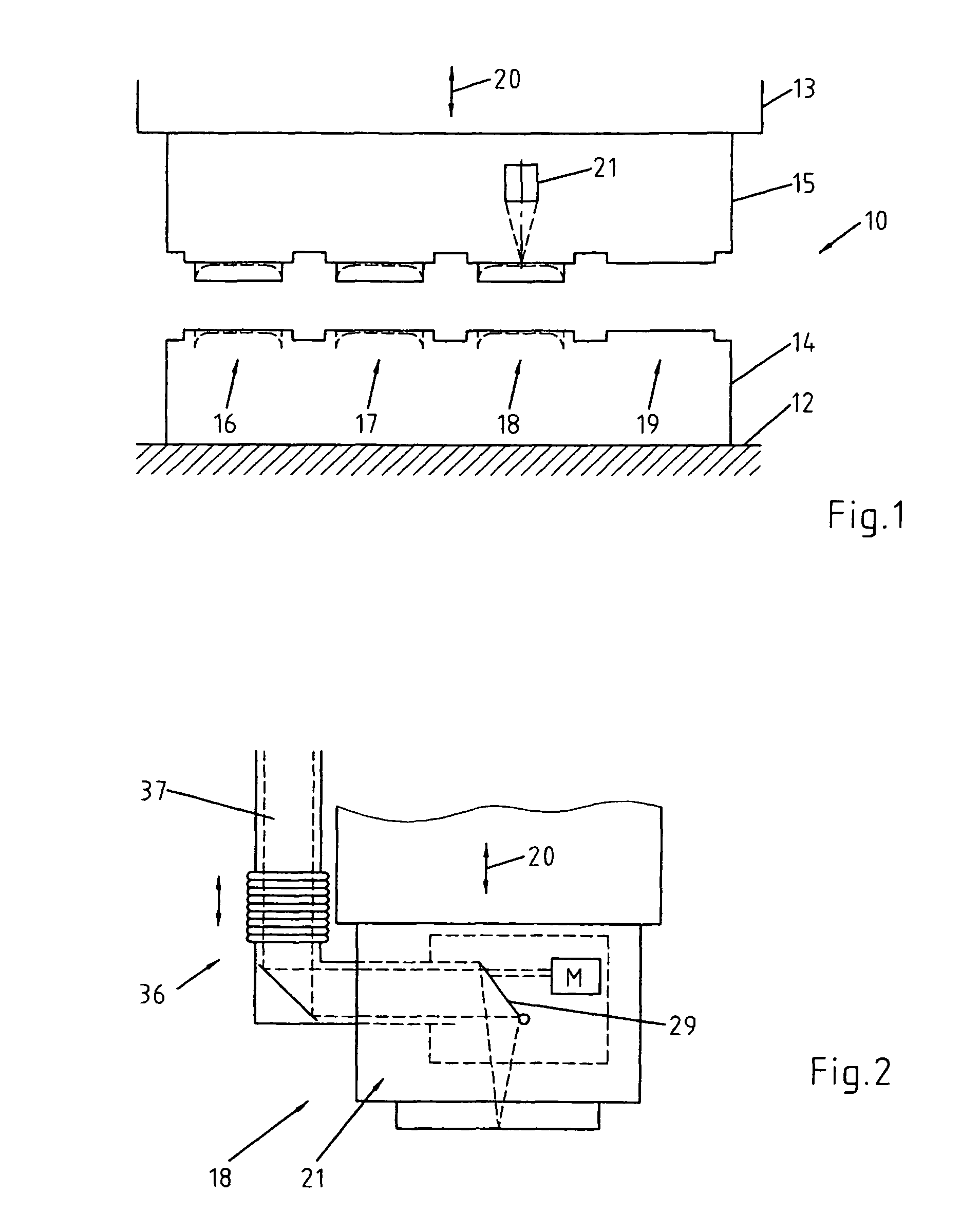Arrangement and method for manufacturing can lids
a technology for can lids and can lids, which is applied in the field of can lid arrangement and a manufacturing method, can solve the problems of limited operating life of the rib, deterioration of the quality of the stamping rib, and the quality of the tear notch of the can lid, so as to reduce the mechanical wear of the press tool and the press mold, improve the service life, and improve the effect of quality
- Summary
- Abstract
- Description
- Claims
- Application Information
AI Technical Summary
Benefits of technology
Problems solved by technology
Method used
Image
Examples
Embodiment Construction
[0033]FIG. 1 shows a press tool 10 for the manufacture of can lids 11 of which one is shown schematically, for example, in FIG. 3. The press or deformation tool 10 is arranged, for example, in a press between a press table 12 and a plunger 13. It comprises a first or lower tool part 14 as well as a second or upper tool part 15. The press tool 10 is preferably a stepping tool with several forming stages 16, 17, 18, 19. These tool stages are provided for different forming operations which are required to form from a planar metal sheet the desired can lid 11 as it is shown, for example, in FIGS. 5 and 7 in vertical sectional view or respectively in a top view. FIGS. 3, 5 and 7 show each an exemplary embodiment of a lid of a beverage can, however, also other can lids as, for example, for canned fish cans can be manufactured according to the invention in the press tool 11.
[0034]In the individual tool stages 16-19 in the lower tool part 14 and in the upper tool part 15 respective compleme...
PUM
| Property | Measurement | Unit |
|---|---|---|
| time period | aaaaa | aaaaa |
| time | aaaaa | aaaaa |
| brittleness | aaaaa | aaaaa |
Abstract
Description
Claims
Application Information
 Login to View More
Login to View More - R&D
- Intellectual Property
- Life Sciences
- Materials
- Tech Scout
- Unparalleled Data Quality
- Higher Quality Content
- 60% Fewer Hallucinations
Browse by: Latest US Patents, China's latest patents, Technical Efficacy Thesaurus, Application Domain, Technology Topic, Popular Technical Reports.
© 2025 PatSnap. All rights reserved.Legal|Privacy policy|Modern Slavery Act Transparency Statement|Sitemap|About US| Contact US: help@patsnap.com



